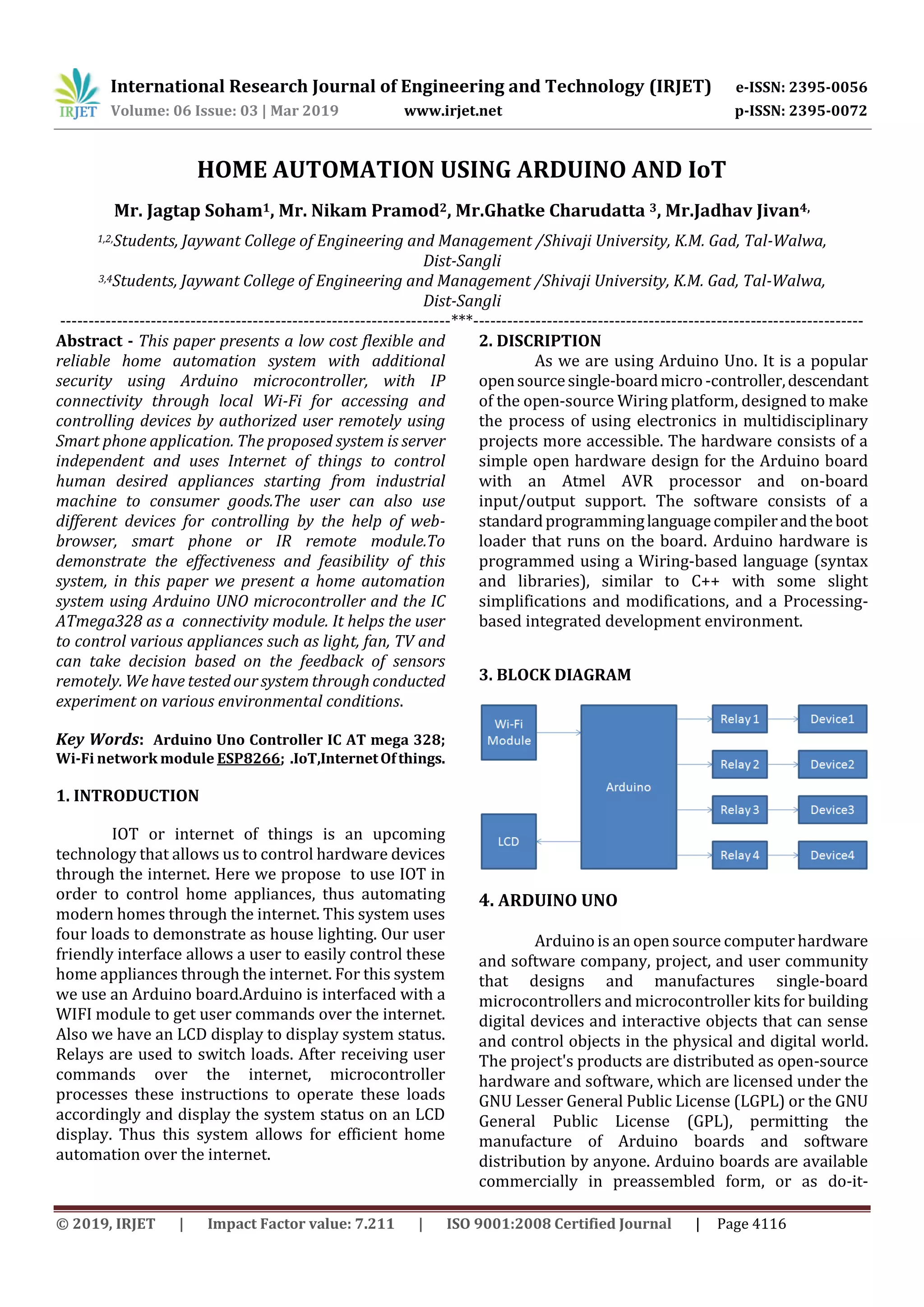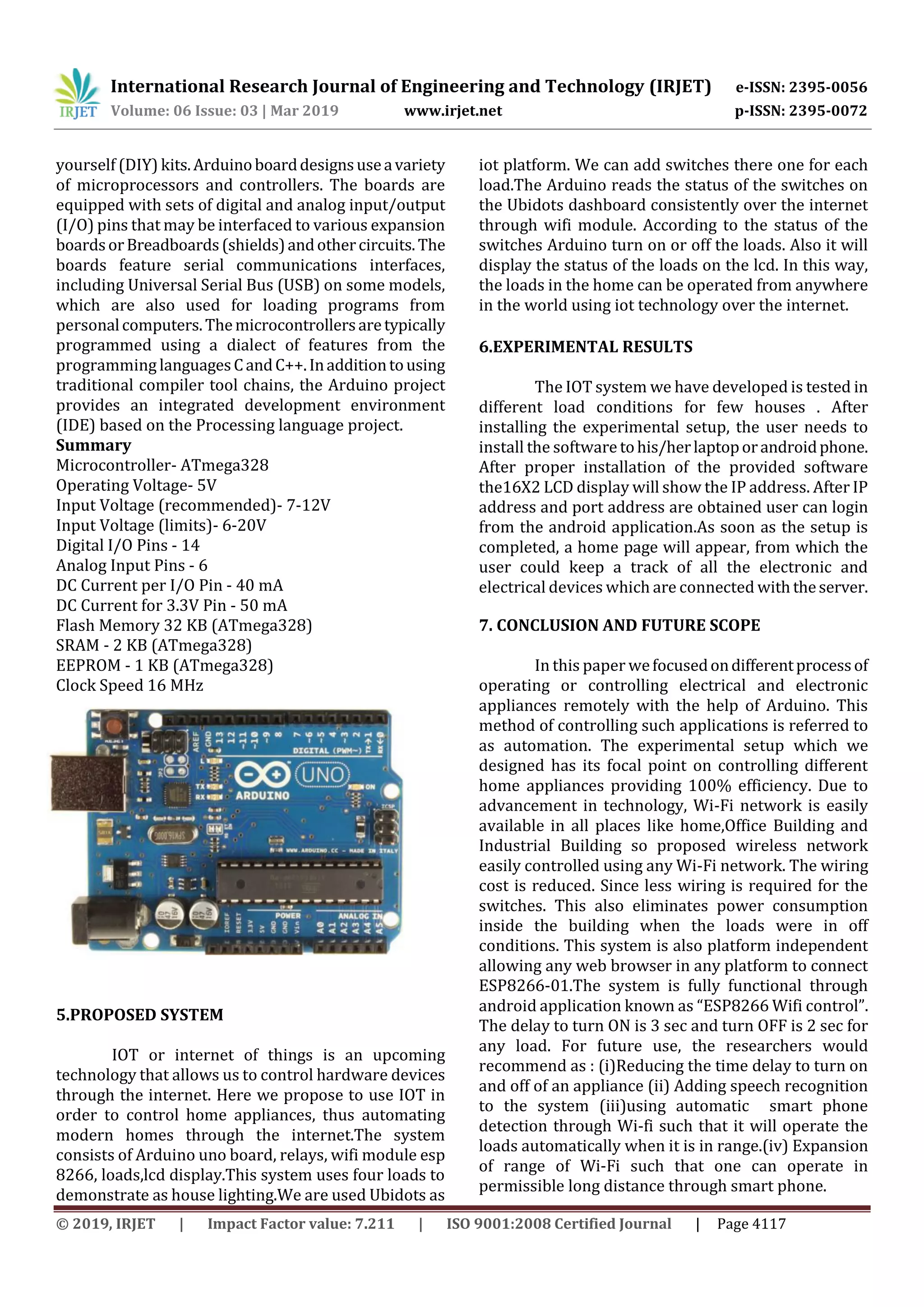This document presents a home automation system using an Arduino microcontroller, WiFi module, and smartphone app for remote control. The system allows users to control appliances like lights, fans, and TV from anywhere using their phone over WiFi. It uses an Arduino Uno board connected to relays to switch appliances on/off based on commands from the user's phone sent over the local network. The system was tested experimentally and can control multiple devices with low delays between 2-3 seconds for switching. Future work may aim to reduce delays and expand the WiFi range for more flexible remote control.


![International Research Journal of Engineering and Technology (IRJET) e-ISSN: 2395-0056
Volume: 06 Issue: 03 | Mar 2019 www.irjet.net p-ISSN: 2395-0072
© 2019, IRJET | Impact Factor value: 7.211 | ISO 9001:2008 Certified Journal | Page 4118
7.REFERENCES
[1] HOME AUTOMATION USING ATmega328
MICROCONTROLLER AND ANDROID
APPLICATION, S.Anusha1, M.Madhavi2,
R.Hemalatha3. International Research Journal
of Engineering and Technology (IRJET) ,
Volume:02Issue:06|Sep-2015www.irjet.net.
[2] Internet of Things: Ubiquitous Home Control
and Monitoring System using Android based
Smart Phone, Rajeev Piyare. International
Journal of Internet of Things 2013, 2(1): 5-11
DOI: 10.5923/j.ijit.20130201.02.
[3] Design and Implementation of a WiFi Based
Home Automation System, Ahmed ElShafee,
Karim AlaaHamed. World Academy of Science,
Engineering and Technology International
Journal of Computer, Electrical, Automation,
Control and Information Engineering Vol:6,
No:8,2012.](https://image.slidesharecdn.com/irjet-v6i31109-191007035428/75/IRJET-Home-Automation-using-Arduino-and-IoT-3-2048.jpg)